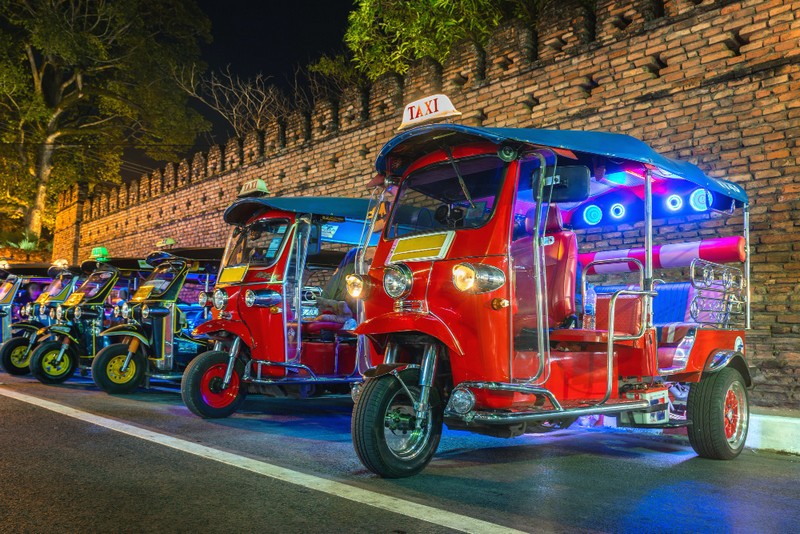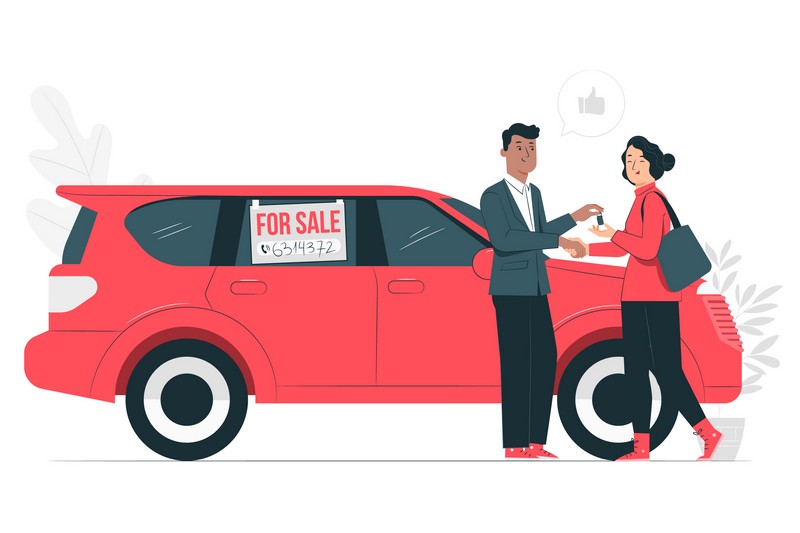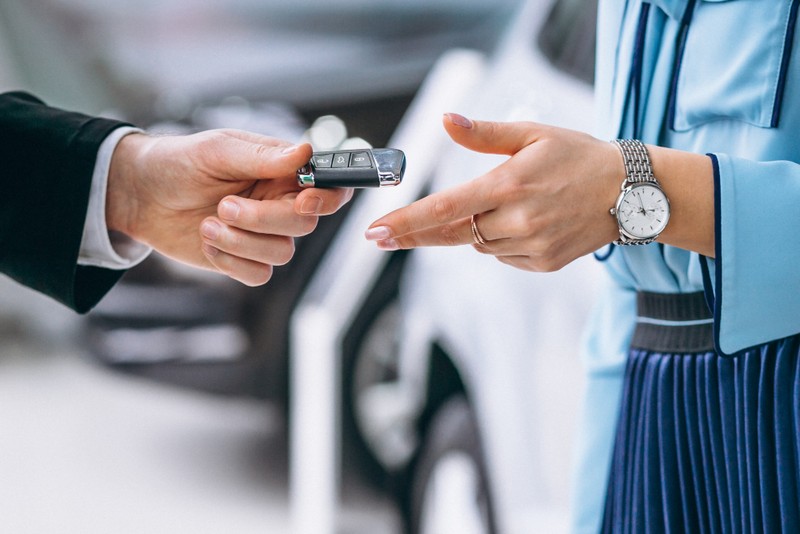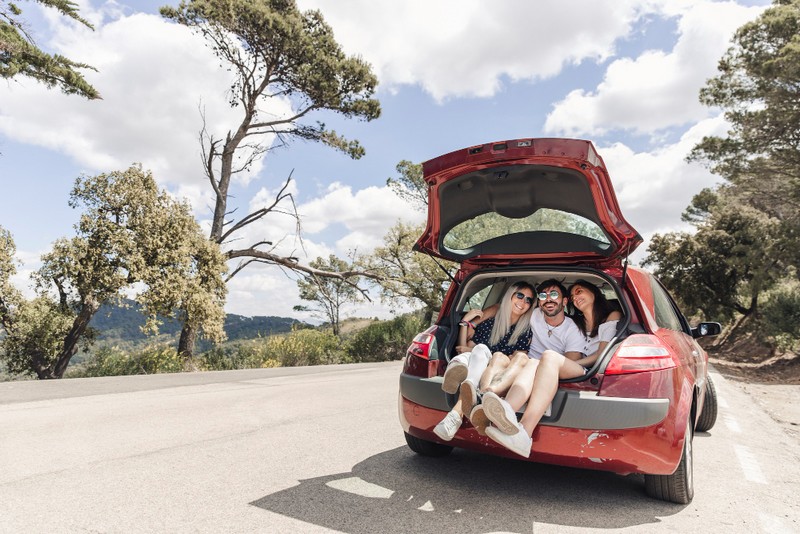Why Consider a Second Hand Car or Motorcycle?
When it comes to purchasing a vehicle, many people automatically think of buying brand new. However, there are numerous advantages to considering a second hand car or motorcycle. One of the main benefits is the significant cost savings. Second hand vehicles are generally priced much lower than their brand new counterparts, allowing you to get more bang for your buck. Additionally, buying second hand also means avoiding the steep depreciation that occurs as soon as a new vehicle is driven off the lot.
Another advantage of buying a second hand car or motorcycle is the wider range of options available. While buying new often limits you to the latest models, purchasing second hand opens up a whole world of possibilities. You can find a variety of makes, models, and years to choose from, giving you the opportunity to find a vehicle that perfectly suits your needs and preferences. Plus, if you’re a car enthusiast, buying second hand allows you to explore classic and vintage vehicles that may not be in production anymore.

Short-time? Just rent – Car and Motobike Rental in Chiang Mai
Another way many people prefer when coming to Chiang Mai for short-time is Car Rental or Motorbike Rental.
When people visiting Chiang Mai for a short time and prefer to have to freedom to travel around as much as they want without wait for a taxi – Rent is a great option!
In Chiang Mai you can find many rentals places for Scooter, Motorcylce and Cars.
Things to Consider When Buying a Second Hand Car
If you’re in the market for a second hand car, there are several important factors to consider before making a purchase. First, it’s crucial to determine your budget and stick to it. This will help you narrow down your options and avoid overspending. Next, research the specific make and model you’re interested in. Look for information on the vehicle’s reliability, maintenance costs, and common issues to be aware of. This will give you a better understanding of what to expect and help you make an informed decision.
When inspecting a used car, it’s essential to thoroughly check the exterior and interior for any signs of damage or wear. Look out for dents, scratches, rust, and any indications of previous accidents. Inside the car, pay attention to the condition of the seats, dashboard, and controls. Take the vehicle for a test drive to assess its performance on the road. Listen for any unusual sounds, check the brakes, and test the various features and functions.
Lastly, don’t forget to review the vehicle’s maintenance history and check its documentation. This will give you insight into how well the car has been taken care of and whether it has undergone any major repairs or modifications. Additionally, consider getting a professional inspection done to ensure there are no hidden issues that could cause problems down the line.
Things to Consider When Buying a Second Hand Motorcycle in Chiang Mai
Chiang Mai, known for its beautiful landscapes and winding roads, is a popular destination for motorcycle enthusiasts. If you’re looking to buy a second hand motorcycle in Chiang Mai, there are a few specific things to keep in mind. First and foremost, familiarize yourself with the motorcycle market in the area. Research the most popular brands and models, as well as their average prices. This will give you a baseline to compare against when you start looking at individual bikes.
When inspecting a used motorcycle, pay close attention to its overall condition. Look for any signs of damage, such as scratches, dents, or rust. Check the tires for wear and tear, as well as the brakes for proper functionality. Take a test ride to ensure the motorcycle handles well and that all the gears shift smoothly. It’s also important to verify the ownership and registration documents to ensure that the motorcycle is legal and can be transferred to your name without any issues.
Additionally, consider the maintenance and repair costs associated with the specific make and model you’re interested in. Some motorcycles may require more frequent servicing or have expensive spare parts, so it’s important to factor these expenses into your budget. Finally, don’t forget to negotiate the price. In Chiang Mai, haggling is common practice, so be prepared to negotiate and don’t be afraid to walk away if the seller’s price doesn’t align with your budget.

Where to Buy a Second Hand Car or Motorcycle in Chiang Mai
Now that you know what to consider when buying a second hand vehicle, you may be wondering where to actually find them in Chiang Mai. Fortunately, there are several options available. One of the most popular choices is to visit reputable dealerships that specialize in used cars and motorcycles. These dealerships often have a wide selection of vehicles sales to choose from and offer additional services such as financing options and warranties.
Another option is to explore online classifieds and marketplaces. Websites like “Buy Car Chiang Mai” and “Buy Used Car” list numerous second hand vehicles for sale in the area. These platforms allow you to filter your search based on your preferences and contact sellers directly to arrange viewings and negotiations. However, it’s important to exercise caution when buying online and always meet the seller in person to inspect the vehicle before making any payments.
Lastly, keep an eye out for local car and motorcycle auctions. These auctions can be a great way to find a second hand vehicle at a competitive price. Auctions often feature a variety of vehicles, including those seized by the police or repossessed by banks. Just make sure to thoroughly inspect any vehicle you’re interested in before participating in the auction.

How to Inspect a Used Car Before Purchase
Inspecting a used car before purchasing it is crucial to ensure that you’re getting a reliable vehicle that meets your needs. Here’s a step-by-step guide on how to properly inspect a used car:
- Exterior Inspection: Start by examining the car’s exterior for any signs of damage, such as dents, scratches, or rust. Pay attention to the condition of the paint and look for any mismatched colors, which could indicate previous repairs. Check the tires for wear and make sure they have sufficient tread depth.
- Interior Inspection: Step inside the car and inspect the interior. Check the condition of the seats, dashboard, and controls. Look for any signs of excessive wear or damage. Test all the features and functions, such as the air conditioning, radio, lights, and power windows, to ensure they are working properly.
- Under the Hood: Pop the hood and take a look at the engine. Check for any signs of leaks, such as oil or coolant stains. Inspect the belts and hoses for wear and ensure they are in good condition. Look at the battery and check the fluid levels.
- Test Drive: Take the car for a test drive to assess its performance on the road. Listen for any strange noises, such as squeaks or rattles. Test the brakes and make sure they are responsive. Pay attention to the steering and suspension to ensure a smooth and comfortable ride.
- Documentation: Review the car’s maintenance history and check its documentation, including the ownership and registration papers. Make sure everything is in order and that there are no outstanding liens or legal issues.
By following these steps, you can conduct a thorough inspection of a used car and make an informed decision before making a purchase.
Motorcycle or Scooter: Which One is Better?
When it comes to choosing between a motorcycle and a scooter, there are a few factors to consider. Motorcycles are generally more powerful and offer higher top speeds, making them a better choice for those who enjoy long rides or highway driving. They also tend to have larger engines, providing more torque and acceleration. Additionally, motorcycles offer a more traditional riding experience with manual transmissions and a variety of riding positions.
On the other hand, scooters are known for their convenience and ease of use. They are typically smaller and lighter than motorcycles, making them easier to maneuver in traffic and park in tight spaces. Scooters also have automatic transmissions, eliminating the need for shifting gears. They are often more fuel-efficient than motorcycles and offer ample storage space under the seat, making them a practical choice for commuting or running errands.
Ultimately, the decision between a motorcycle and a scooter depends on your personal preferences, intended use, and riding experience. If you’re an experienced rider looking for speed and performance, a motorcycle may be the better option. However, if you’re a beginner or prioritize convenience and practicality, a scooter could be the perfect choice for you.

How to Inspect a Used Motorcycle Before Purchase
When buying a used motorcycle, it’s essential to thoroughly inspect it to ensure that you’re getting a reliable and safe vehicle. Here are the key steps to follow when inspecting a used motorcycle:
- Exterior Inspection: Start by examining the motorcycle’s exterior for any signs of damage or wear. Look for scratches, dents, or rust, as these could indicate previous accidents or neglect. Check the condition of the tires, including the tread depth and any signs of uneven wear.
- Engine Inspection: Inspect the engine for any leaks or signs of damage. Look for oil or coolant stains, as well as any loose or frayed wires. Check the condition of the drive chain or belt, and make sure it is properly tensioned. Additionally, inspect the exhaust system for signs of rust or damage.
- Controls and Electronics: Test all the controls and electronics, including the lights, turn signals, horn, and gauges. Make sure they are in working order and that there are no warning lights illuminated on the dashboard. Test the brakes to ensure they are responsive and check the suspension for any signs of wear or leaks.
- Test Ride: Take the motorcycle for a test ride to evaluate its performance on the road. Pay attention to how it accelerates, shifts gears (if applicable), and handles corners. Listen for any unusual noises, such as rattles or grinding sounds. Test the brakes and make sure they provide sufficient stopping power.
- Legal Documentation: Verify the ownership and registration documents to ensure that the motorcycle is legal and can be transferred to your name without any issues. Check for any outstanding fines or legal disputes that could affect the ownership.
By following these steps, you can thoroughly inspect a used motorcycle and make an informed decision before purchasing.

Legal Aspects of Buying a Second Hand Car or Motorcycle
When buying a second hand car or motorcycle, it’s important to consider the legal aspects to ensure a smooth and legal transaction. Here are some key legal considerations:
- Ownership Transfer: Ensure that the seller has the legal right to sell the vehicle and that they are the registered owner. Check the ownership documents to verify this information. When transferring ownership, make sure to complete all the necessary paperwork, including the bill of sale and transfer of ownership form.
- Registration and Taxes: Check the registration documents to ensure that the vehicle is properly registered and that there are no outstanding fees or fines. Additionally, be aware of any taxes or fees that may be applicable when transferring ownership. Consult with the local authorities or a legal professional to understand the specific requirements in your area.
- Vehicle History: Request the vehicle’s history report to check for any previous accidents, repairs, or major issues. This will give you insight into the vehicle’s condition and help you make an informed decision. Additionally, ensure that the vehicle identification number (VIN) matches the documentation and that there are no discrepancies.
- Warranty and Insurance: Understand the warranty coverage, if any, that comes with the vehicle. Some used cars or motorcycles may still have an active warranty, while others may be sold “as is.” Additionally, consider obtaining insurance coverage for the vehicle before taking ownership. This will protect you in case of any unforeseen accidents or damages.
- Legal Disputes: Be cautious of any legal disputes or outstanding liens on the vehicle. Conduct a thorough search to ensure that the vehicle is not involved in any legal issues or has any unpaid debts attached to it. This will help you avoid potential complications or financial liabilities.
By paying attention to these legal aspects, you can ensure a legal and hassle-free purchase of a second hand car or motorcycle.
Tips and Tricks for Negotiating the Price of a Second Hand Car or Motorcycle
Negotiating the price of a second hand car or motorcycle is an important step in getting the best deal possible. Here are some tips and tricks to help you negotiate effectively:
- Do Your Research: Before entering into negotiations, research the market value of the specific make and model you’re interested in. Look for comparable vehicles in similar condition and with similar mileage to get an idea of what a fair price would be. This information will give you a strong starting point for negotiations.
- Set a Budget: Determine your budget and stick to it. This will help you stay focused during negotiations and prevent you from overspending. Consider additional expenses such as taxes, registration fees, and insurance when setting your budget.
- Point Out Flaws: During the inspection process, take note of any flaws or issues with the vehicle. Use these as leverage during negotiations to justify a lower price. For example, if you noticed significant wear on the tires, you can request a reduction in price to compensate for the cost of replacing them.
- Be Willing to Walk Away: One of the most powerful negotiation tactics is being prepared to walk away if the seller is not willing to meet your price. This shows that you’re serious about getting a fair deal and can often lead to the seller reconsidering their offer.
- Bundle Up: If you’re buying multiple vehicles from the same seller or if you’re interested in purchasing additional accessories or parts, consider bundling them together to negotiate a better overall price. Sellers are often more willing to offer discounts when they see the potential for a larger sale.
Remember, negotiation is a two-way street. Be respectful but firm in your negotiations, and always be prepared to compromise. By following these tips and tricks, you can increase your chances of getting a great deal on a second hand car or motorcycle.
Common Pitfalls to Avoid When Buying Second Hand Vehicles
While buying a second hand vehicle can be a great way to save money, there are some common pitfalls to avoid. Here are a few mistakes to watch out for:
- Skipping the Inspection: One of the biggest mistakes you can make is not thoroughly inspecting the vehicle before purchasing it. This can lead to unexpected issues and costly repairs down the line. Always take the time to inspect the vehicle inside and out, and consider getting a professional inspection if you’re unsure.
- Ignoring Maintenance History: The maintenance history of a second hand vehicle is crucial in understanding its condition and reliability. Neglecting to review the maintenance records can leave you in the dark about potential issues or upcoming maintenance needs. Always request the maintenance history and review it carefully before making a purchase.
- Falling for a Bargain: While it’s natural to be attracted to a great deal, be cautious of vehicles that are priced significantly lower than others on the market. There may be hidden issues or underlying problems that the seller is not disclosing. If a deal seems too good to be true, it’s worth investigating further or seeking professional advice.
- Rushing the Decision: Buying a second hand vehicle is a significant investment, and it’s important to take your time and make an informed decision. Rushing the process can lead to regret or overlooking important details. Be patient, do your research, and take the time to carefully consider all aspects before making a purchase.
- Forgetting Legal Considerations: It’s easy to get caught up in the excitement of buying a new vehicle, but don’t forget about the legal aspects. Ensure that all the necessary paperwork is in order and that you are transferring ownership legally. Failure to do so can result in legal complications or difficulties down the line.
By avoiding these common pitfalls, you can increase your chances of having a positive and successful experience when buying a second hand car or motorcycle.
Top Models for Second Hand Cars and Motorcycles
When it comes to second hand vehicles, some models have proven to be popular choices among buyers. Here are a few top models for second hand cars and motorcycles:
Second Hand Cars:
- Honda Civic: The Honda Civic is known for its reliability, fuel efficiency, and comfortable ride. It offers a spacious interior and a range of features, making it a popular choice among second hand car buyers.
- Toyota Corolla: The Toyota Corolla is another highly reliable and fuel-efficient option. It offers a comfortable and smooth ride, along with a reputation for long-term durability.
- Ford Focus: The Ford Focus combines practicality with sporty styling. It offers a comfortable interior, responsive handling, and a range of engine options to suit different preferences.
Second Hand Motorcycles:
- Honda CB500X: The Honda CB500X is a versatile adventure motorcycle that offers a comfortable riding position, good fuel efficiency, and a smooth ride. It’s a popular choice for both commuting and longer trips.
- Yamaha MT-07: The Yamaha MT-07 is a naked sportbike that combines performance with affordability. It offers a powerful engine, agile handling, and a stylish design, making it a sought-after option among second hand motorcycle buyers.
- Kawasaki Ninja 300: The Kawasaki Ninja 300 is a sporty and beginner-friendly motorcycle. It offers a lightweight chassis, easy handling, and a responsive engine, making it a great choice for riders of all skill levels.
These are just a few examples of top models for second hand cars and motorcycles. Ultimately, the best model for you will depend on your specific needs, preferences, and budget.
Conclusion
Buying a second hand car or motorcycle can be a smart choice that offers numerous benefits, including cost savings and a wider range of options. However, it’s important to approach the process with caution and take the necessary steps to ensure a reliable and legal purchase. By considering factors such as the vehicle’s condition, maintenance history, and legal aspects, you can make an informed decision and avoid common pitfalls. Whether you’re looking for a second hand car or motorcycle in Chiang Mai or anywhere else, following the guidelines and tips outlined in this guide will help you navigate the process with confidence.
in case you need more transport and motoring options without buy car or motorcylce you can see in Nan La all services for moving around the beautiful city Chiang mai.
Happy hunting!





